dwarfplanet
Latest
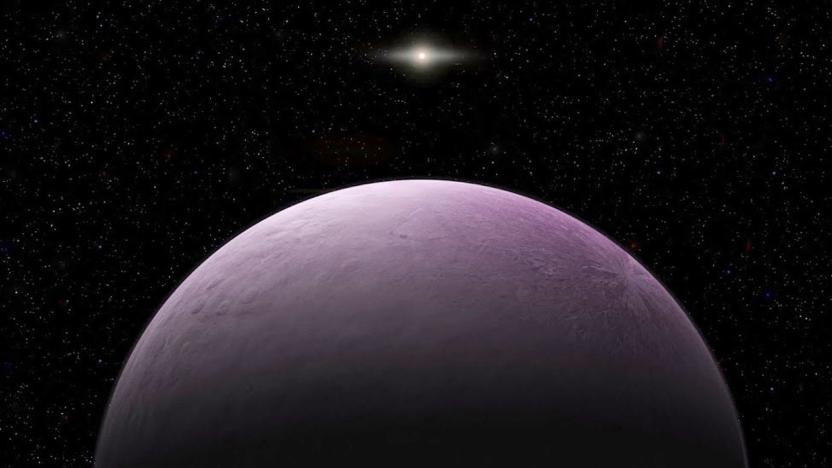
'Farout' is the farthest Solar System object known to date
The reach of the Solar System extends well beyond the full-size planets, and that's becoming clearer than ever with a new discovery. Astronomers have detected 2018 VG18 "Farout," which is the most distant Solar System object known to date at 120AU from the Sun (about 11.15 billion miles) -- the previous record-setter, the dwarf planet Eris, is 'just' 96AU away. That makes it over three and a half times farther from the Sun than Pluto (34AU), and over 100 times farther than Earth. But what is it, exactly?
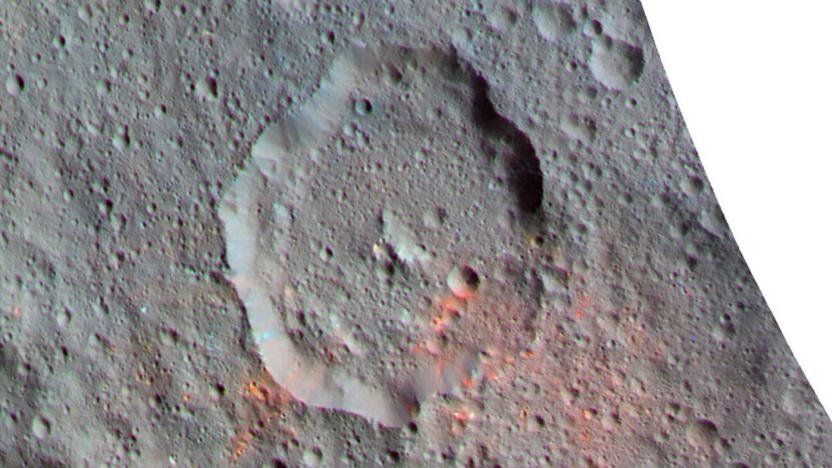
Dawn probe spots organic materials on dwarf planet Ceres
Ceres is now officially included the list of celestial bodies where we've found organic molecules. NASA's Dawn scientists have spotted the presence of organic compounds on the dwarf planet using the spacecraft's visible and infrared mapping spectrometer (VIR). They found the organics covering an area measuring around 400 square miles in and around Ceres' northern-hemisphere crater called Ernutet. They also found smaller patches of land with organics several miles east and west of Ernutet, as well as in another crater. That's pretty abundant, considering Christopher Russell (Dawn's principal investigator) said they weren't "expecting to see something like this on the surface of Ceres" at all.

Dwarf planet Ceres' surface isn't what scientists expected
As much as we now know about Ceres, it's evident the dwarf planet still has a few surprises left. Astronomers have discovered that Ceres' surface isn't as carbon-rich as previously thought. A fresh batch of infrared scans shows that the surface is likely "contaminated" by material (dry pyroxene dust) from asteroid impacts, mixing in with 'wet' dust, ice and carbonates. While Ceres has previously been lumped into the same composition class as nearby asteroids, it turns out that it merely looks like its neighbors -- it's a different beast altogether when you dive deeper.

Dwarf planet Ceres is 'oozing' with water
Scientists already knew via remote observations that Ceres, the dwarf planet (or humongous asteroid if you prefer), has plenty of water in it. The Dawn probe has now revealed that the asteroid is composed of as much as 30 percent water at the poles, explaining its ice volcano and weird bright spots. "It's just oozing," Planetary Science Institute's Thomas Prettyman told Nature, adding that you'd "just swipe and find the ice table" at Ceres' northern pole.
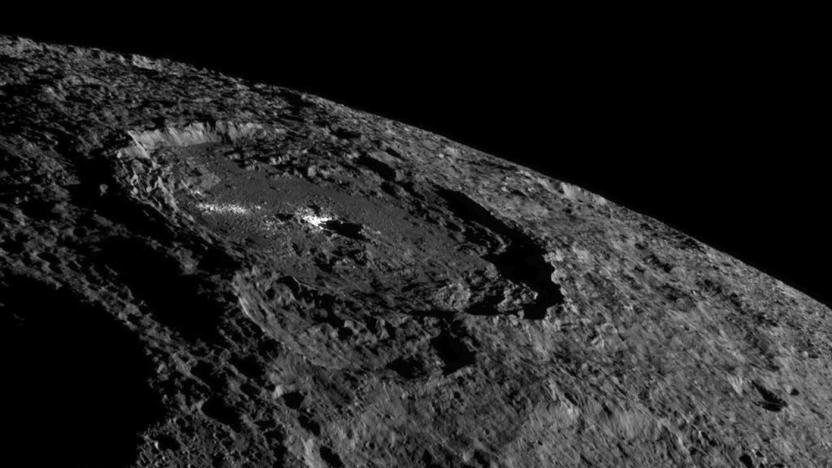
NASA says Ceres' brightest crater is made of salt
The scientists in charge of NASA's Dawn spacecraft has released more high-res images of Ceres, along with information that sheds more light on what it's made of. One of the new images is another close-up of its famous Occator Crater taken from a different angle on October 16th, 920 miles above the dwarf planet. Occator is Ceres' brightest spot, and according to the Dawn team's latest research, it's because the crater is made of salt. The team believes the impact that formed the crater forced a briny liquid to seep out from underground. It froze then immediately turned into vapor, leaving a blanket of salt behind.

Astronomers spot a tiny dwarf planet beyond Pluto
Pluto, Ceres, Eris, Makemake and Haumea have another possible candidate to consider for their dwarf planet squad. A team of researchers have discovered the new, tiny candidate deep within the Kuiper belt, 8.5 billion miles from the sun. It's officially called the 2014 UZ224, because they first spotted it in 2014 -- the reason we're only hearing about it now is because it took two years to confirm its existence.
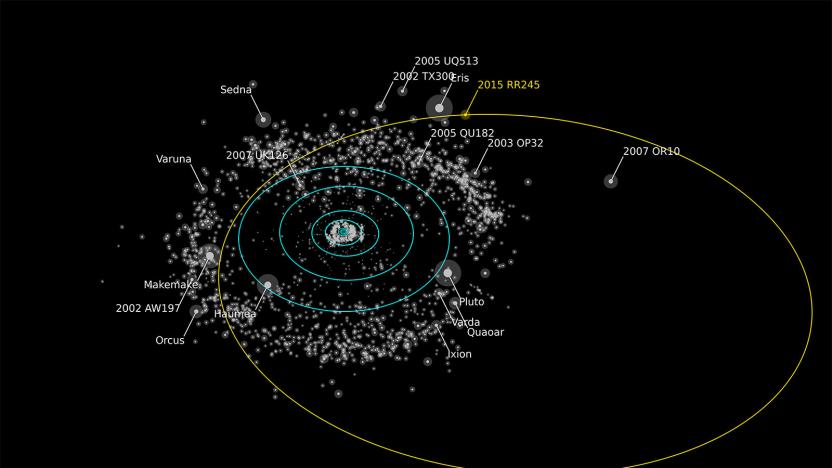
Hawaiian telescope spots a new dwarf planet beyond Neptune
Just beyond Neptune lies a ring of small, icy worlds that offer insight into the formation of our Solar System, and scientists using the Canada-France-Hawaii Telescope on Maunakea, Hawaii, just discovered a new dwarf planet in this region that rivals Pluto and Eris in visibility. It's called RR245 and in this case, size matters -- many of the worlds in the farthest reaches of the Solar System are too small and dull for Earthbound scientists to study. Basically, when it comes to post-Neptune dwarf planets, the bigger and brighter, the better.
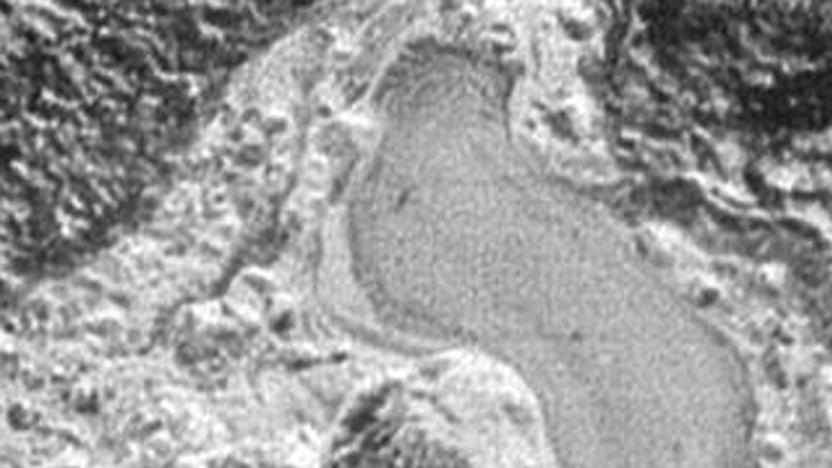
New Horizons spots signs of a former lake on Pluto
The New Horizons probe isn't just revealing details of Pluto's highest heights... it's also uncovering some of the dwarf planet's hidden history. NASA has published an image form the spacecraft showing evidence of a former frozen lake. The remnants are relatively small (20 miles across at their widest), but the surrounding channels hint that the lake held liquid nitrogen at some point in the distant past. While we'll need more data to draw any firm conclusions, this suggests that Pluto was considerably livelier "millions or billions" of years ago -- it wasn't the wasteland it appears to be today.

NASA's closest-ever Ceres photos reveal more odd shapes
NASA's ever-closer inspection of Ceres may have answered some questions, but not all of them... if anything, it might raise a few more. The agency has published its closest-ever photos (240 miles above the surface) of the dwarf planet, and they're revealing details that would have been hard to imagine from further away. Take the crater you see above, for example. It's full of strange, crease-like slopes that researchers believe are the result of collapses while the crater formed. Other snapshots show cracks, probably formed by melting from impacts, and the material (likely salt) that produces Ceres' signature bright spots.

Pluto gets rainbow-hued in NASA's latest images
Pluto may have been imaged six ways from Sunday, but it's clear that the New Horizons probe still has a few surprises up its sleeve. NASA has posted both a photo and a video showing how the spacecraft can produce vibrant colors from the seemingly drab-looking dwarf planet. The key is New Horizons' infrared spectrometer. Its linearly-varying filter produces a stained glass window effect as it looks for reflected chemicals, like in the clip you see below -- the dark bands come when Pluto's methane ice absorbs those materials. And when researchers plug the results into visible color channels, the result is the almost festive mix of red and green (with hints of blue) that you see above.

Astronomers discover the most distant Solar System object to date
Little by little, the furthest corners of the Solar System are starting to come into focus. Astronomers have identified the most distant object yet in our planetary system, roughly 15.5 billion kilometers (or 103 astronomical units) from the Sun. For comparison, one astronomical unit is the distance between the Earth and our enormous neighbourly star. Scott Sheppard, an astronomer at the Carnegie Institution for Science, announced the discovery of the dwarf planet -- catalogued as V774104 -- at a meeting of the American Astronomical Society's Division for Planetary Sciences. It was observed with Japan's Subaru Telescope (above) and measures 500 to 1,000 kilometers across. A fascinating find, although scientists will need to track it further to work out its exact shape and orbit.

NASA's trippy Ceres map shows what the dwarf planet is made of
No, you're not looking at an artist's watercolor impression of the Moon. That's NASA's false-color map of Ceres, generated using a mix of infrared and visible light filters onboard the Dawn spacecraft currently orbiting the dwarf planet. The resulting psychedelic freakout isn't just for show, of course. The surface temperatures reflected in those colors give scientists an idea of both Ceres' mineral contents and the age of its many craters and ridges. Reddish hues reveal materials that reflect infrared light, while green highlights spots that are much brighter than usual. Even if humanity never touches down on the planet's surface, you'll eventually know what you could expect from a first-hand visit. [Image credit: NASA/JPL-Caltech/UCLA/MPS/DLR/IDA]

Fly close to Pluto in a detailed NASA tour
Alas, you're unlikely to soar over Pluto's alien landscape any time soon -- not when it's billions of miles away. However, NASA has whipped up an aerial tour that will give you an inkling of what it might be like. The simulated flyover (below) uses the New Horizons probe's latest high-res imagery to show off Pluto with an "unprecedented" level of detail of up to 0.25 miles per pixel). It's certainly not the same as being there, but it's not hard to imagine sitting in a spacecraft orbiting the dwarf planet. And don't worry if this doesn't meet your expectations. New Horizons will eventually send pictures that are up to seven times sharper, so you can expect more impressive virtual flights in the months ahead.

NASA's latest Ceres photo shows a strange, conical mountain
If you were hoping that closer-up photos of Ceres would solve some of the dwarf planet's mysteries... well, you'll have to keep waiting. NASA's Dawn probe has transmitted pictures taken from 915 miles up, and one of them shows an odd, conical mountain jutting out of the landscape. Seriously, it's baffling -- its shiny surface and abrupt angles make it look like it was transplanted on an otherwise soft, cratered surface. There's no explanation for what created it (an ancient collision, perhaps?), but it's clearer than ever that even a seemingly featureless celestial body can hold its share of surprises.

NASA's latest Pluto images actually show a planet
At last, NASA's New Horizons spacecraft is sending back images of Pluto that look (slightly) better than brown blobs or pixel art. The probe has delivered a new batch of images from between 7.8 million to 9.2 million miles away, or close enough that the dwarf planet is starting to reveal some meaningful detail. There's still no explanation for those giant spots, but it's evident that there's a "continuous swath" of dark ground near the equator. And if you'd like pictures that are better than fuzzy, you might not have to hold out for too much longer. New Horizons should be considerably closer when it recovers from its recent glitch, and the expected July 14th flyby should produce a ton of extra detail. [Image credits: NASA/JHUAPL/SWRI]

NASA shows what it would be like to fly over Ceres
Humans might not fly over the dwarf planet Ceres any time soon, but that doesn't mean you have to wonder what it would be like to soar over this miniature world. NASA just released a simulated flyover that uses real mapping data to give a new perspective on Ceres. The vertical detail is "exaggerated," the agency says, but the video (below) still gives a good sense of what this alien location is like -- it's a tinier, bumpier version of Earth's Moon. And if the level of detail doesn't impress you at the moment, you'll be glad to hear that the Dawn probe is entering ever-lower orbits that should boost the level of detail. Don't be surprised if later models are nearly as good as being there.

Scientists prove dwarf planet Ceres contains water
Scientists have long thought that the dwarf planet Ceres might hold some form of water, but they've only had indirect evidence at best -- until today, that is. An ESA-led team has used signal fluctiations to confirm that the asteroid belt planetoid is spewing water vapor from two points on its surface, creating both ice and a rudimentary atmosphere. It isn't clear what's producing the vapor, although researchers believe that geysers, thawing or icy volcanoes may be responsible. Whatever is behind Ceres' behavior, the discovery could improve our understanding of how water reached Earth. We'll get a much clearer picture of what's happening in early 2015, when NASA's Dawn probe swings by to map the mini-planet's water activity in greater detail. [Image credit: ESA/ATG medialab/Küppers et al.]




